40 years ago: Secret matter Cho Oyu Southeast Face
Only the spouses were in the know. The three Austrians Edi Koblmüller, Alois Furtner and Gerhard Haberl as well as the two Germans Herbert Spousta and Peter von Gizycki had agreed on strict secrecy. After all, the eight-thousander Cho Oyu was not open to climbers in Nepal in 1978. So the five climbers disguised themselves as trekking tourists and hiked to Gokyo. Their actual destination was a few kilometers behind: the 3,000-meter-high Southeast Face of the 8,188-meter-high Cho Oyu. “I was obsessed with this idea,” Alois Furtner, who reached the summit with Koblmüller on 27 October 1978, writes to me. The others turned around about 200 meters below the summit. “Friends of ours later called it a ‘century adventure’. Today I know that it was a very courageous undertaking,” recalls the now 70-year-old Furtner. “At that time I was so determined and focused that it had to happen. Just as a pregnant woman has to give birth to her child, I had to realize this plan in a similar way. And I succeeded.”
![]() read more
read more
Elizabeth Hawley is dead
The legendary chronicler of Himalayan moutaineering has passed away. “I am very saddened to announce that after a short battle in hospital, Elizabeth Hawley has left us”, the German journalist and climber Billi Bierling informed. “Personally, I cannot put it into words how much this amazing woman has meant to me, how much she has taught me and how much I will miss her in my life.” Elizabeth Hawley was 94 years old when she died. Two years ago, she had handed over the work on her chronicle “Himalayan Database” to Billi.
![]() read more
read more
Decision on Nanga Parbat postponed, Urubko in Camp 2 on K2
Do you already have aching muscles from keeping fingers crossed? Your pain could become even stronger. Because the summit bid of the Pole Tomek Mackiewicz and the Frenchwoman Elisabeth Revol that was expected already for Sunday is delayed. “We are in Camp 3, (it’s) windy (with speeds of) about 100 km/h,” Tomek is quoted today on his Facebook page. “Tomorrow Camp 4, summit push (on) 25 January. Good weather (is expected for) that day.” In fact, the weather forecast for the summit at 8,125 meters predicts for Thursday the lowest wind speeds this week: between 15 and 25 km/h. Assuming this forecast is correct, it will be almost calm, however with minus 42 degrees Celsius quite cold, some clouds are expected. Mackiewicz and Revol climb without bottled oxygen.
![]() read more
read more
The “Third Man”
I have experienced it myself. It happened in fall 2011 during my failed summit attempt on the 7,246-meter-high Putha Hiunchuli in western Nepal, somewhere above 7,000 meters. My teammates were out of reach, I was fighting my way up alone, physically and mentally at the limit. “Please!,” I suddenly heard Pemba Nuru, one of our two Climbing Sherpas, say behind me. “Please what?,” I asked and turned around. But nobody was there. Strange. Scientists call the phenomenon the “Third Man”. Descriptions of such hallucinations abound in expedition reports from the highest mountains in the world. Psychiatrists of the Medical University of Innsbruck and emergency physicians of the private research center “Eurac Research” in Bolzano have now examined about 80 such descriptions from alpine literature and discovered, according to their own information, a new disease: the “isolated high-altitude psychosis”.
![]() read more
read more
Mick Fowler: “No, I’m not dying right now”
First I had to swallow. He has cancer? That cannot be for real. “For us in the ‘Club of 50+’, people like Mick Fowler are acting like an antidepressant,” I once wrote about the British extreme climber. In my view, the now 61-year-old proves that true adventure knows no age limits. Year after year, Mick sets out to remote Himalayan regions to enter unexplored climbing terrain. And with great success: Mick has been awarded the Piolet d’Or, the “Oscar of the Climbers”, already three times. Again this year, he had planned another first ascent in the Indian Himalayas, as in 2016 with his compatriot Victor Saunders, another “oldie”, aged 67. But then, a few months ago, Fowler received the devastating diagnosis: “‘You have cancer’ was both a shock and a relief,” Mick writes looking back. “The uncertainty was over. No more dithering. The trip would have to be cancelled. But what would lie ahead?”
![]() read more
read more
The yeti is dead, long live the yeti!
As a child, everyone has probably experienced this phase. Actually, you know that Santa Claus does not exist and that it’s your parents who put the presents under the tree. And yet you are repressing this fact – simply because Santa is part of the party. Something like that happens to me with the yeti. Actually, I do not believe that this huge mountain monster on two legs really exists, however, for me, the myth and the countless legends about the abominable snowman are simply part of the Himalayas. Therefore, I find it – quite frankly – rather silly that American scientists from the University of Buffalo now stand up and say: The yeti is actually a bear.
![]() read more
read more
Oswald Oelz: “Mountaineers are unteachable”
“I will climb until I am dead,” says Oswald Oelz, sitting opposite me recently at the International Mountain Summit in Bressanone. The 73-year-old native of Austria lives as a retiree in an old farmhouse in the Zurich Oberland region in Switzerland. “I have a farm with sheep, parrots, ducks, geese, chickens. I write, read a lot, climb. And I travel around the world.” Oswald called “Bulle” Oelz scaled Mount Everest in 1978, on the same expedition, during which Reinhold Messner and Peter Habeler climbed the highest mountain on earth for the first time without bottled oxygen. Oelz succeeded first ascents in the Alps, in Alaska, Jordan and Oman. Until 2006 he worked as chief physician at the “Triemli hospital” in Zurich. The professor also researched in the field of high altitude medicine.
Oswald Oelz, you are a mountaineer and a doctor, you have got to know both worlds. Time and again, there are fatalities in the high mountains due to high altitude cerebral or pulmonary edema. Has the climbing community learned nothing over the past decades?
![]() read more
read more
Nives Meroi: “The arrogance of commercial climbing”
One eight-thousander is still missing. Then Nives Meroi and Romano Benet would be the first couple who would have scaled together the 14 highest mountains in the world – always without bottled oxygen and without Sherpa support. On 12 May, the two 54-year-olds from Italy stood at the top of their eight-thousander No. 13, the 8485-meter-high Makalu in Nepal.
Nives was 19 years old when she met Romano. First he was her climbing partner, then her life partner. They are married for 27 years. In 1998, they scaled Nanga Parbat, it was their first eight-thousander. In 2003, they succeeded in climbing the Karakorum trilogy of Gasherbrum I, II and Broad Peak in just 20 days. In 2007, Meroi was the first Italian woman who climbed Everest without oxygen mask.
Life-threatening disease
But there were also setbacks. In 2009, Meroi had a good chance to become the first woman on all 14 eight-thousanders. On Kangchenjunga, at 7500 meters, Romano suddenly became increasingly weak. He tried to persuade Nives to climb on alone. But she refused and supported him during the descent. The reason for Benet’s weakness was serious: aplastic anemia. Two bone marrow transplants were necessary to save Romano’s life. They returned to the Himalayas. In 2014, Romano and Nives climbed Kangchenjunga. And now Makalu. Five questions to and five answers by Nives Meroi:
Nives, Romano and you have managed to climb Makalu, your 13th eight-thousander. If you compare it with the other twelve, was it rather one of the more difficult or easier ascents?
![]() read more
read more
HACE, the hidden danger
20 doctors, nearly twice as many test persons. The Swiss research expedition to the seven-thousander Himlung Himal in fall 2013 had the objective to investigate the effects of high altitude on the human body. More than two years later, the first results are there to see. I have talked about it to Dr. Tobias Merz. The 46-year-old is a senior physician at the Department of Intensive Care Medicine at the University Hospital in Bern. Since his youth, Merz has been doing sports in the mountains. So it’s no coincidence that he has committed himself to high altitude medicine too. “In intensive care medicin a disease takes organ systems to the limits of the possible, in high-altitude medicine external conditions are responsible for this,” says Merz. Before going on expedition to Himlang Himal, he had already experienced high altitude as a climber in the Andes and the Himalayas. On the eight-thousander Shishapangma, Merz had reached a height of about 7,600 meters. He then had had to give up his own summit ambitions because he had been needed for a rescue. On Himlung Himal, he stood on the highest point.
Dr. Merz, in 2013 you reached the 7,126 meter-high summit of Himlung Himal. Do you feel somewhat queasy in hindsight if you look at your first research findings?
I already knew that high altitude climbing is a high-risk sport and that it takes you to limits of physiology and rationality. For me, the results were more a confirmation of what I had suspected and less a huge surprise.
But you have worked out something worrying for high altitude mountaineers.
![]() read more
read more
Dalai Lama: Climate change threatens roof of the world
200 meters as the crow flies away from my desk, nothing less than the future of the planet is negotiated. Until Friday representatives from around the world are debating at the World Conference Center Bonn on a new climate agreement. It is to be adopted at the global climate talks in Paris, which will begin in late November. Once again the negotiations are long and tough. The solidarity with the states that are already feeling the effects of climate change is within limits. In most cases economy beats ecology. But the clock is ticking. With only a few exceptions, glaciers are melting worldwide. Glacier Works, an organization founded by US mountaineer David Breashears in 2007, has impressively documented how far for instance the glaciers around Mount Everest have retreated during the past decades. Now the Dalai Lama has pointed to the consequences of climate change for his Tibetan homeland.
![]() read more
read more
When the glacier melts
Nepal has a problem with its glaciers. Over the past three decades, the 3808 glaciers in the Himalayan country have shrunk by about a quarter. The increased melt created some glacial lakes which scientists call ticking time bombs. One of the biggest of them, Tsho Rolpa, which is located about 100 kilometers northeast of Kathmandu, is estimated to contain between 90 and 100 million cubic meters of water by now. If the natural dam burst, it would have devastating consequences. This week, the Nepalese capital is hosting an international conference, during which more than 200 scientists from around the world exchange their findings about the impact of climate change on the high mountains of Asia – not only on the the Himalayas, but also on Karakoram, Hindu Kush, Tien Shan, Pamir and the Tibetan plateau.
![]() read more
read more
Sought: Himalayan Mountain Hut
As in the Alps, mountaineers in the Himalayas shall soon find shelter in mountain huts. Not in simple wooden or metal sheds. The new huts shall be functional, low maintenance, not too expensive, but, please, also nice and comfortable. The Nepal Mountaineering Association (NMA), in cooperation with the Nepalese development programme Samarth, announced a competition for architects and designers to find “an innovative high altitude accommodation unit which will be the first of its kind ever to be established in Nepal”.
![]() read more
read more
Luis, last minute
In one point it is the same for mountaineers who want to climb an eight-thousander and for everyday travellers: Shortly before departure the dates are accumulating. They have to pave the way for their long absence in their jobs, meet friends and family and – last but not least – make the last preparations for the upcoming project. That applies to Luis Stitzinger, too. We met last weekend in Oberstdorf in the Alpes, the day before Luis’ departure to Nepal. The 45-year-old German and his wife Alix von Melle want to climb again Makalu, at the height of 8485 meters the fifth highest mountain in the world. In 2010, the couple had to turn back on 8050 meters at temperatures of minus 45 degrees Celsius. Alix and Luis have already climbed six eight-thousanders: Cho Oyu, Gasherbrum II, Nanga Parbat, Dhaulagiri, Broad Peak and Shishapangma, all without using bottled oxygen. This makes the 43-year-old Alix the most successful German women at the highest mountains in the world.
![]() read more
read more
No decision yet on “new” 8000ers
Nepal has to be patient for about one more year. At its general assembly in Pontresina in Switzerland the International Mountaineering and Climbing Federation (UIAA) has not yet decided whether it will recognize additional 8000-meter-peaks or not. According to the Nepal Mountaineering Association a UIAA commission had named six side peaks that could be accepted as prominent peaks with a unique identification: Kanchenjunga West-Peak (alias Yalung Kang, 8505 m), Central-Peak (8473 m) and South-Peak (8476 m), Lhotse Central-Peak (8410 m) and Shar (8382 m), Broad Peak Central (8011 m). “Both Nepal and China Mountaineering Association delegates welcome and fully support the UIAA initiation”, Nepalese Ang Tshering Sherpa, Honorary member of UIAA, wrote to me after his return from Switzerland. “Also Pakistan Alpine Club and Indian Mountaineering Foundation delegates were very positive but need more time to get approval from their association’s annual general meeting which will be held end of Dec 2013 or January 2014.”
![]() read more
read more
More than 600 glaciers have already disappeared
Better safe than sorry, this also applies for public relations. Three years ago the IPCC slipped on the ice of the Himalayan glaciers. In its last report on climate change that was published in 2007 it was predicted that all Himalayan glaciers would have disappeared until 2035. In 2010 the IPCC had to concede tranposed digits, the right year in the prediction should have been 2350. There was a flood of criticism. No wonder that in the summary of the new climate report the word “Himalaya” is missing. The IPCC only announced that “over the last two decades (…) glaciers have continued to shrink almost worldwide”. Also in the full report, which is more than 2,000 pages long, the IPCC is only making cautious predictions for the Himalayas.
![]() read more
read more



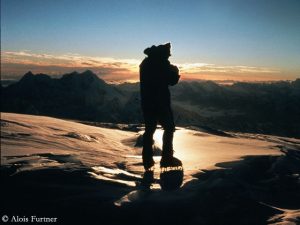

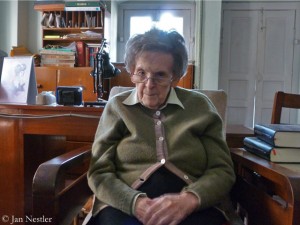
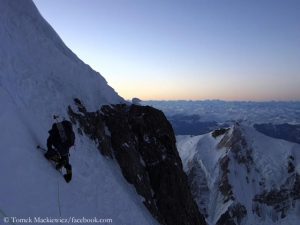
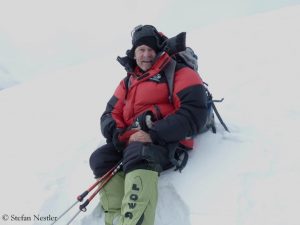
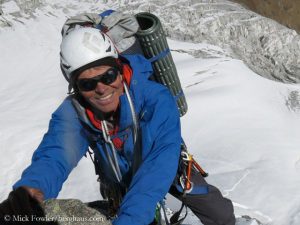
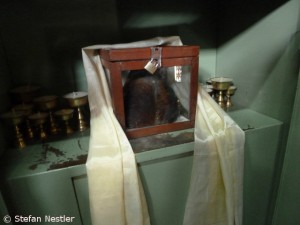

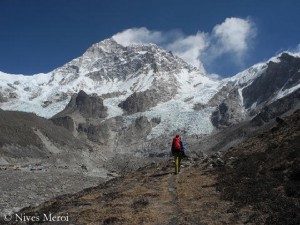

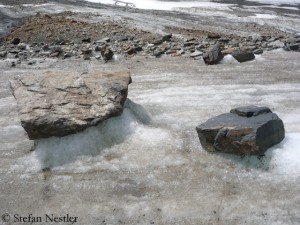



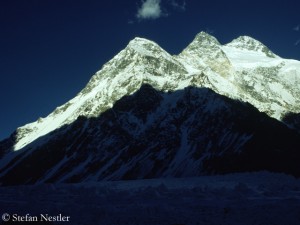





Feedback